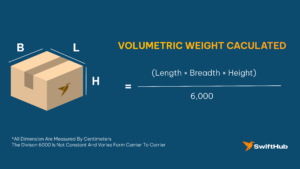Have you ever faced the challenge of trying to cram your suitcase shut because it’s overflowing with items? Well, shipping carriers face a similar dilemma when transporting your goods. Their cargo space is finite, and optimizing it is crucial for their profitability. To tackle this issue, carriers have developed a concept known as “volumetric weight.” In this article, we will delve into what volumetric weight is, how it’s calculated, and how you can minimize its impact on your shipping costs.
What is Volumetric Weight?
Not all weight is created equal, and this is where volumetric weight comes into play. Imagine shipping a plane filled with feather pillows versus one packed with smartphones. The pillows might be light, but they take up an enormous amount of space, cost less, and require more shipments to generate a significant profit. Volumetric weight, also called dimensional weight or DIM weight, is a pricing technique employed by shipping companies to ensure they don’t lose money on large, lightweight shipments.
Volumetric weight is calculated based on the volume (size) of a package, rather than its actual physical weight. It aims to address the disparity between the space occupied by a package and its actual weight.
How is Volumetric Weight Calculated?
Calculating volumetric weight involves a straightforward process. Follow these steps:
- Measure the package’s length, width, and height in inches.
- Multiply these dimensions to find the cubic size of your package.
For example, if your package measures 40 inches in length, 16 inches in width, and 16 inches in height, the cubic size would be 10,240 cubic inches.
Next, you’ll need to apply a dimensional weight divisor, which varies by shipping carrier.

Can Volumetric Weight Be Minimized?
Yes, you can take steps to reduce the impact of volumetric weight on your shipping costs:
- Optimize Packaging: Try to minimize the size of your packages. E-commerce fulfillment companies can help repackage items to maximize space and reduce shipping costs.
- Choose Wisely: Explore shipping services that offer more favorable volumetric divisors. Some carriers might be more cost-effective for your specific needs.
While volumetric weight may initially seem like an additional challenge for shippers, it’s a necessary tool for ensuring fairness and sustainability in the shipping industry. By understanding how it’s calculated and implementing strategies to minimize its impact, you can make smarter decisions that optimize both your shipping expenses and the efficient use of valuable cargo space. So, next time you send a package, remember the importance of volumetric weight in the world of shipping.

 Tiếng Việt
Tiếng Việt

